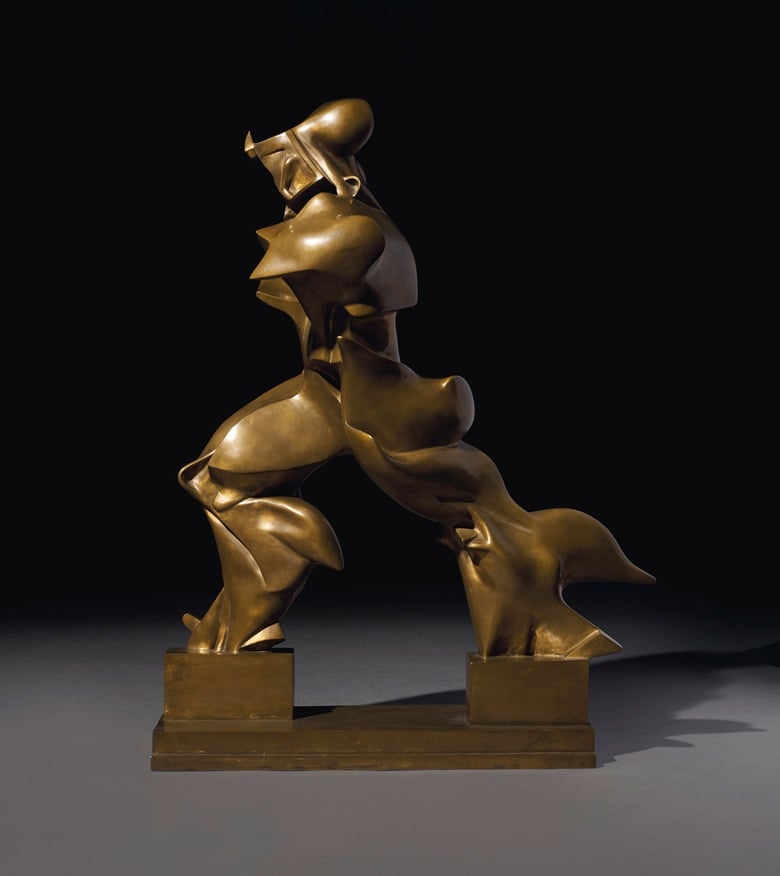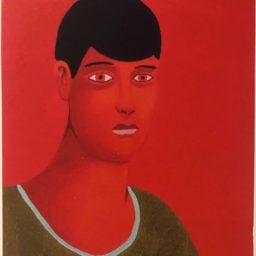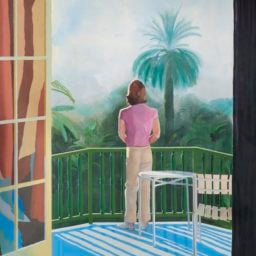Christie’s did not manage to achieve a white-glove sale at its Impressionist and Modern evening auction in New York tonight, since six lots failed to sell out of a total of 58. But the house persevered through a subdued mood to find respectable results. Call it a work-glove sale instead.
The auction landed solidly in the middle of its pre-sale estimate range with the help of a hefty, dreamy René Magritte and a record-setting sculpture by the Futurist Umberto Boccioni. The total hammer price for the evening was $162 million, or $191.9 million with auction-house fees. With or without the buyer’s premium, the figure was within expectations, which ranged from $148.3 million to $219.2 million. (Technically, that range dipped lower, to $138 million to $203 million, after three lots were withdrawn.)
Not counting those three withdrawn lots, Christie’s found buyers for 52 of the 58 works to actually reach the auction block—good for a 90 percent sell-through rate. That exceeded the house’s average sell-through rate of 82 percent across all sales in 2018, according to Christie’s CEO Guillaume Cerutti.
Together, the figures led Cerutti to conclude that the results bucked worries of a downturn and revealed the existence of a “very solid, resilient market.” It just wasn’t always a glamorous one.
The Big Picture
The premium-inclusive $191.9 million total for tonight’s sale represented a 31 percent drop from the equivalent sale last year, which amassed $279.3 million even after multiple expected star lots went unsold. But last November’s projection also started much higher: “in excess of $304.7 million,” making it almost a foregone conclusion that this evening’s results would not compare favorably in this regard. (Sales results include the buyer’s premium, unless otherwise noted; pre-sale estimates do not.)
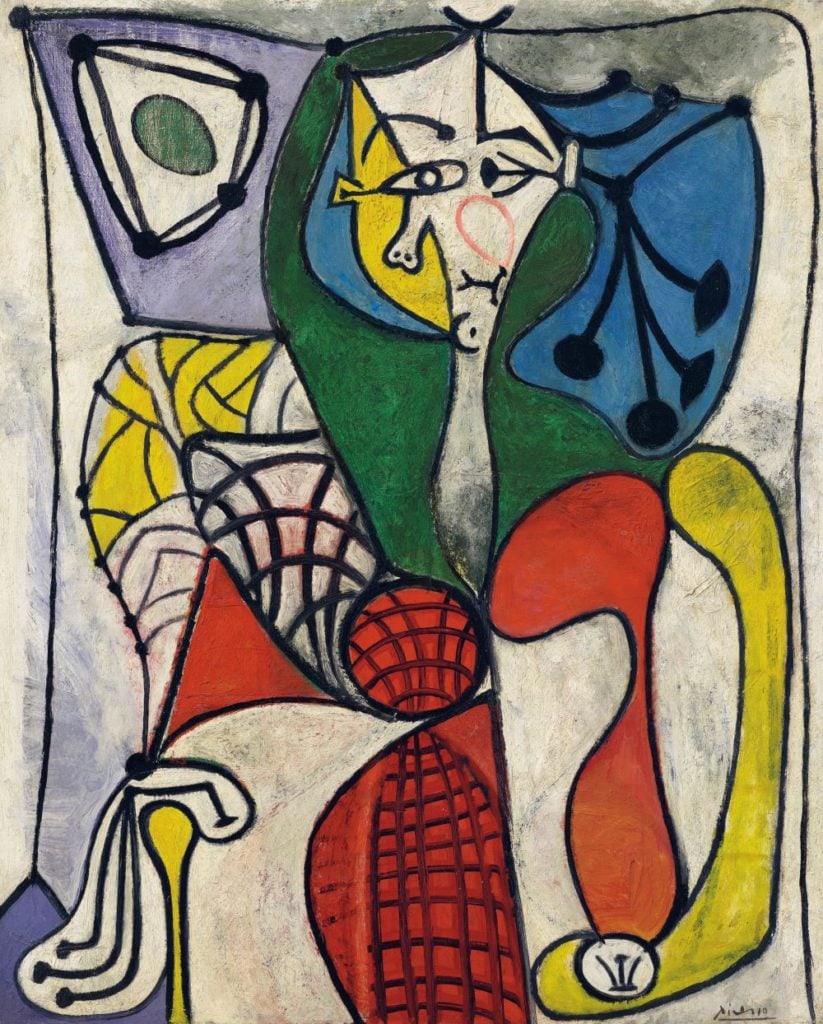
Pablo Picasso, Femme dans un fauteuil (Francoise) (1949). Image courtesy of Christie’s Images Ltd.
Of the 58 lots actually offered in tonight’s sale, 16 enjoyed the safety of an in-house and/or third-party guarantee by the time auctioneer and co-chairman of global private sales Adrien Meyer opened bidding. The guaranteed lots accounted for roughly $53.3 million of the $191.9 million total, assuming the guarantee amount matched each work’s low estimate. That sum is substantially lower than in seasons past—one of multiple signals that suggested a calmer market this fall.
Another such signal was the reduction in trophy lots. Only five works in Christie’s sale tonight carried an estimate at or above $10 million, and none exceeded the high estimate of $18 million for the cover lot, Pablo Picasso’s Femme dans un fauteuil (Françoise) (1949). For comparison, last year’s equivalent sale featured Claude Monet’s Le bassin aux nymphéas (1917–19), with a high estimate of $50 million, as well as a Van Gogh with an estimate of $40 million and another Picasso projected to sell for as much as $20 million.
Yet you can only sell the works that clients are willing to offer. And Christie’s team did well with what they were able to secure, especially as the narrative of an art-market cool-down took hold over the past several weeks.
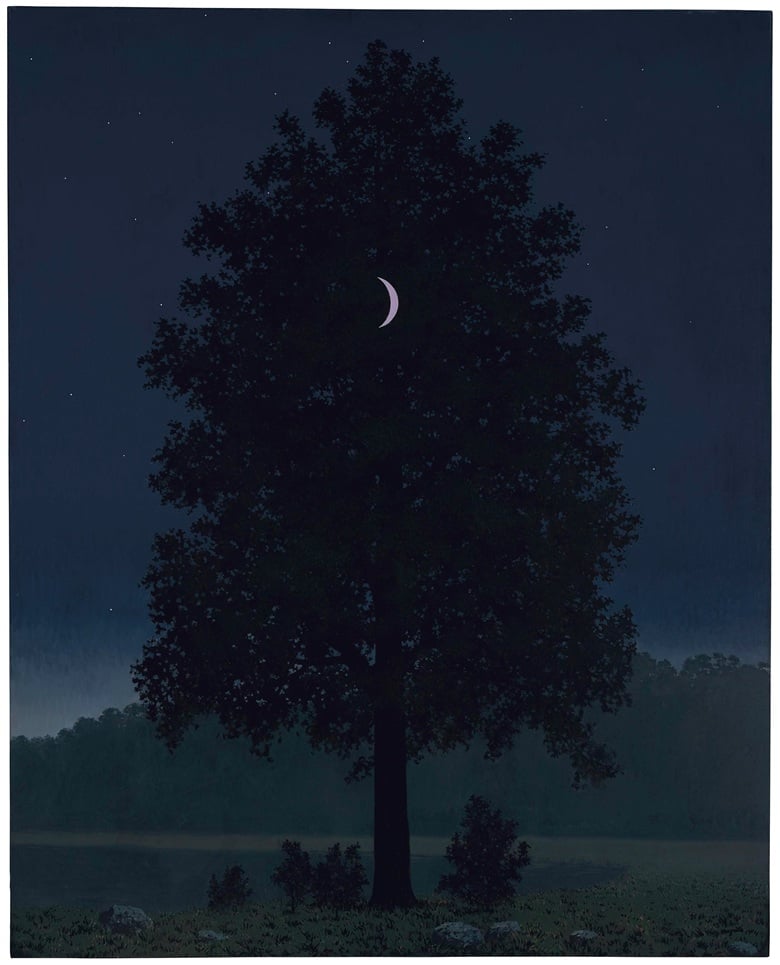
René Magritte, Le seize septembre (1957). Courtesy of Christie’s in New York.
Works That Shined and Works That Shrank
The night’s two big winners took no one by surprise. René Magritte’s Le seize septembre (1957), depicting a crescent moon impossibly shining through a lone tree, entered the sale estimated at $7 million to $10 million. Consigned from the collection of Chicago philanthropists James and Marilynn Alsdorf, the painting is one of only 19 Magritte completed at this size or larger, according to evening sale head Jessica Fertig, with only four of them still in private hands as of tonight. The piece sold for $19.6 million to a phone bidder represented by Christie’s chairman of the Americas Marc Porter.
The other star lot was Umberto Boccioni’s modernist landmark Forme uniche della continuità nello spazio (Unique forms of continuity in space), which he originally conceived in 1913. Christie’s Max Carter described the 1972 cast on offer as “an almost unpriceable object” during Christie’s press preview of the sale, since this marks only the second time in a century one of Boccioni’s sculptures has gone under the hammer. Christie’s estimated the work, the fourth edition of eight, between $3.8 million and $4.5 million and secured it with a third-party guarantee. It hammered to Harry Smith of Gurr Johns art advisory, according to the Baer Faxt, for a record-setting $16.2 million with fees.
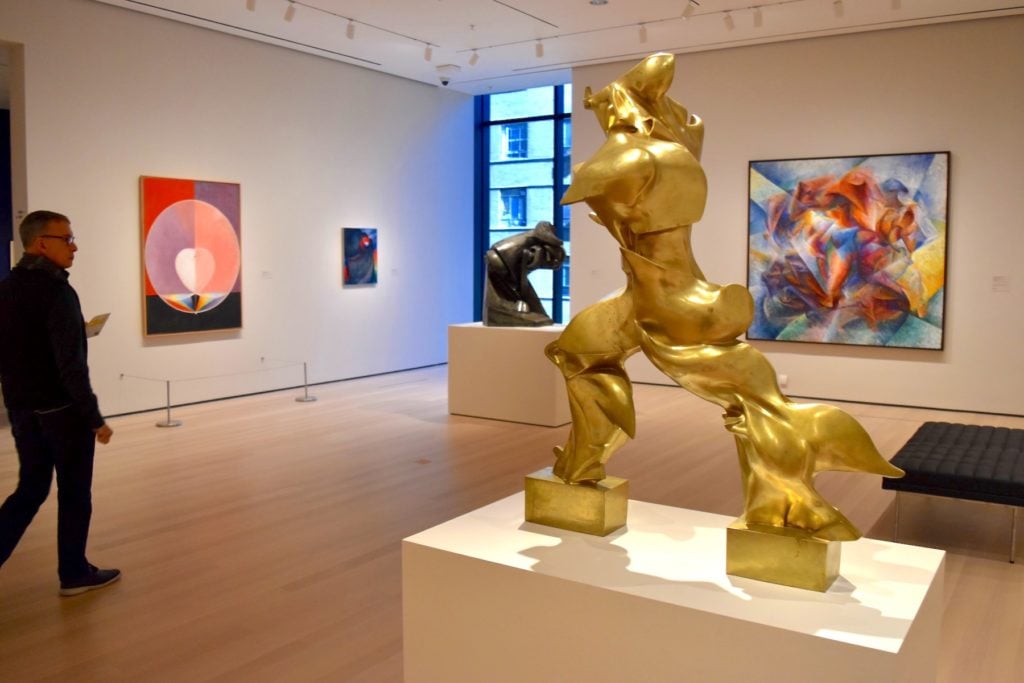
MoMA’s “Circa 1913” gallery with Umberto Boccioni, Unique Forms of Continuity in Space (1913). Image: Ben Davis.
Other works featured by Christie’s in the lead-up to the auction met less illustrious fates. The sale’s aforementioned cover lot, Picasso’s Femme dans un fauteuil (Françoise) (1949) hammered below estimate at $11.5 million, to a phone bidder liaised by Jussi Pylkkänen. With premium, though, it inched above its $12 million low estimate to $13.3 million.
Picasso’s Buste d’homme (1968), a “mosquetaire” painting from the collection of theater producer Terry Allen Kramer, entered the sale estimated at $9 million to $12 million. The piece had not been seen on the public market since 1993, when it changed hands for just under $600,000 in the sale of the collection of Stanley J. Seeger, who the New York Times described in his 2011 obituary as “a reclusive, idiosyncratic art collector who disposed of Picassos, Beckmanns, and Bacons nearly as fast as he bought them.” However, the fanfare for its return likely didn’t quite reach what Christie’s hoped for. The piece hammered at $8 million and rose just above the low estimate with fees to $9.4 million.
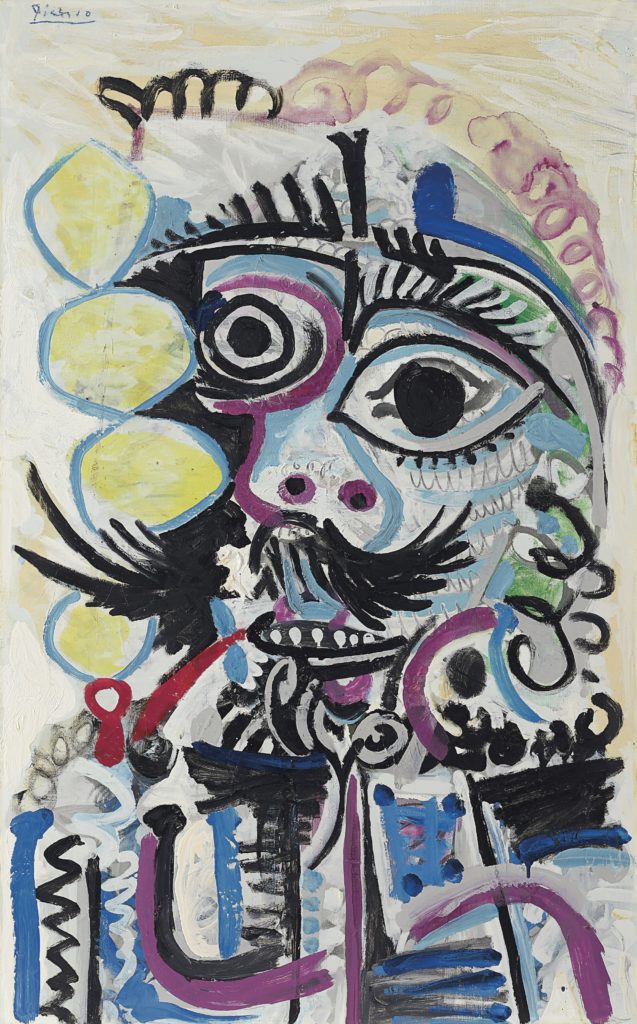
Pablo Picasso, Buste d’homme, 1968. Courtesy of Christie’s Images Ltd.
A few notable buyers—or at least middlemen—chose to focus on less publicized works. The Nahmad family of collector-dealers struck early by winning two of the sale’s first four lots: Joan Miró’s Peinture (Le Soleil) for a within-estimate $1.4 million including fees, and an untitled Yves Tanguy canvas for $1.8 million (hammered below estimate at $1.45 million), among others. Jeffrey Deitch was the victor for a Picasso gouache, La Madone à la guirlande, that landed at an above-estimate $2.9 million including premium.
Perhaps there’s a lesson in these last results: during a week of lowered expectations, it may be the gems at the edges that will attract the keenest eyes.
With additional reporting by Eileen Kinsella.
